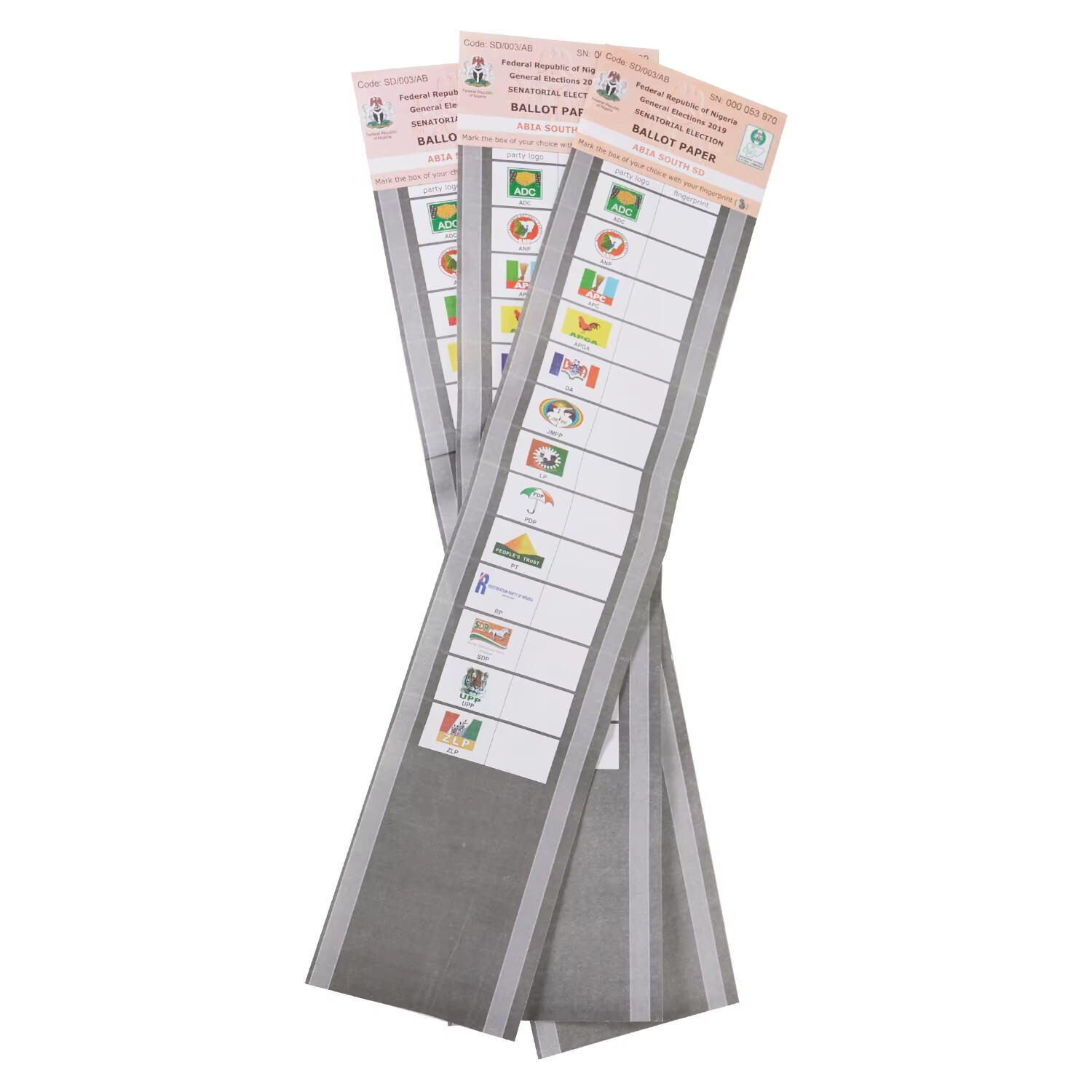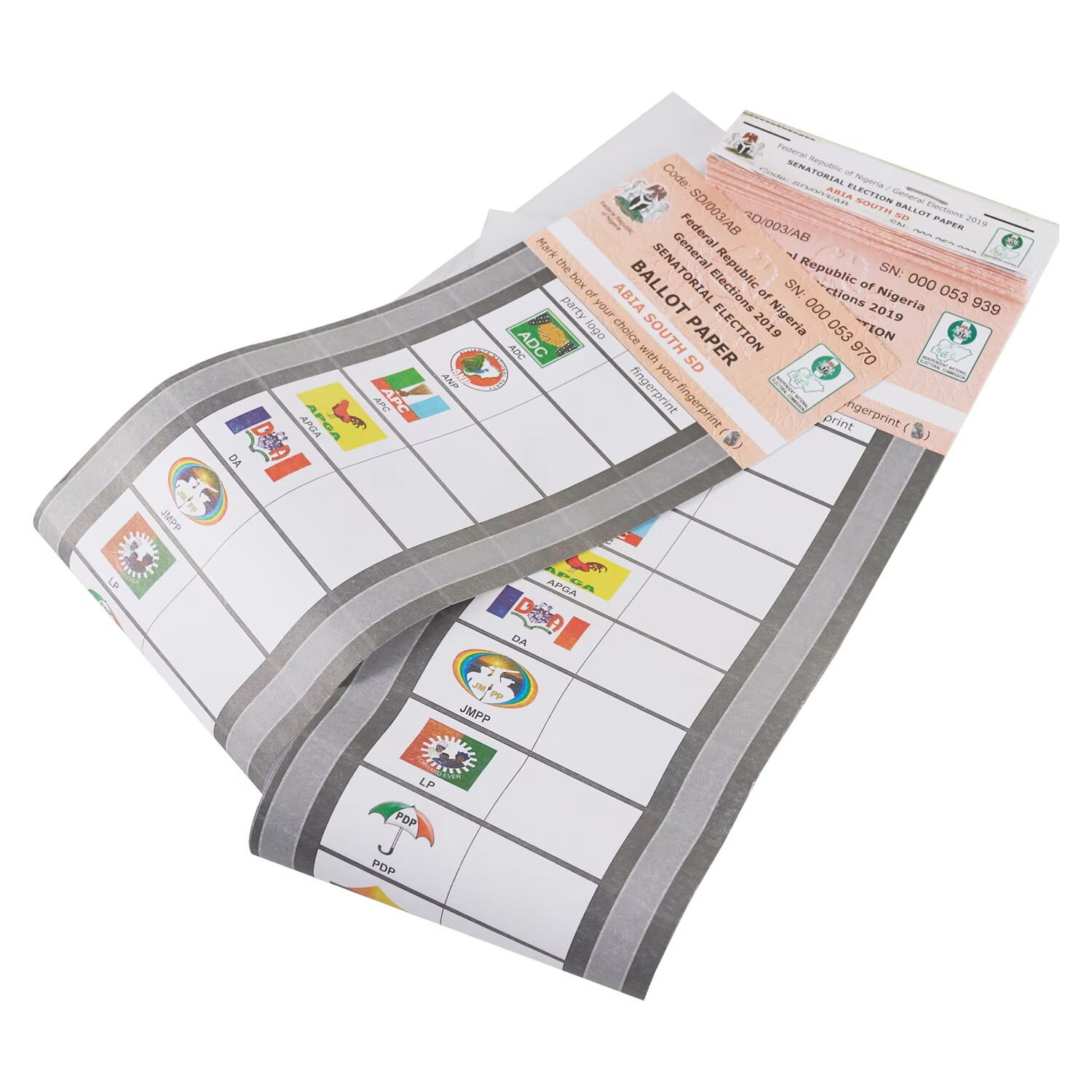RTL
Klicken, um zu aktivieren

In demokratischen Systemen weltweit hängt die Wahltransparenz stark von der Integrität und Genauigkeit des gedruckten Materials ab wahlschein . Die Herstellung von Wahlzetteln mag wie ein einfacher Prozess erscheinen, doch sie umfasst mehrere Ebenen der Qualitätskontrolle, Sicherheitsgestaltung und gesetzlichen Vorgaben. Vom Beginn des Druckvorgangs bis zur letztendlichen Verteilung an die Wahllokale ist jeder Schritt sorgfältig koordiniert, um Betrug zu verhindern, das Vertrauen der Wähler zu wahren und verlässliche Ergebnisse sicherzustellen. Der Wahlzettel ist nicht nur ein Medium – er ist die Grundlage demokratischer Legitimität.
Wahlschein wird mit hochpräziser Technologie gedruckt. Spezialmaschinen ermöglichen eine gleichmäßige Tintenapplikation, Schriftkontrolle und Mikroschrift-Druck. Diese Maschinen können verdeckte Markierungen einbetten, die nur unter UV-Licht oder mit speziellen Scannern sichtbar sind, wodurch eine Nachahmung durch Fälscher nahezu unmöglich wird. Digitale Kontrolle über den Prozess stellt sicher, dass jedes Stimmzettelblatt einheitlich und nachverfolgbar ist.
Moderne Stimmzettel enthalten manipulationssichere Gestaltungselemente wie Wasserzeichen, Mikroperforationen und wärmereaktive Tinten. Diese Komponenten werden bereits während der Papierherstellung und des Druckprozesses integriert, sodass jede nachträgliche Veränderung am Stimmzettel unmittelbar sichtbar wird. Solche Merkmale erhöhen sowohl die Transparenz als auch das Vertrauen und schaffen eine Schutzschicht gegen Stimmzettelveränderungen oder -duplizierung.
Die ausgewählte Papierart ist in der Druckphase entscheidend. Wahlzettel müssen stabil genug sein, um das Falten, den Transport und die manuelle Handhabung ohne Reißen oder Verschmieren zu überstehen. Hochwertiges Papier verhindert zudem, dass die Tinte durchschlägt, was Stimmen ungültig machen oder während der Auszählung zu Verwirrung führen könnte.
Immer häufiger entscheiden sich Regierungen und Wahlkommissionen für umweltfreundliche Wahlzettel. Durch Recyclingpapier und nachhaltig bezogene Materialien lässt sich der ökologische Fußabdruck von Wahlen reduzieren. Umweltfreundliche Wahlzettel können dieselbe Langlebigkeit und Sicherheit wie konventionelle Varianten aufweisen, sofern sie ordnungsgemäß beschafft und produziert werden.

Um Fairness zu gewährleisten, muss jedes Stimmzettelblatt im Layout und Lesbarkeit identisch sein. Druckunternehmen verwenden Ausrichtungsraster und automatische Inspektionssysteme, um zu überprüfen, dass Logos, Kandidatennamen und Parteisymbole genau positioniert sind. Selbst geringste Abweichungen können zu Streitigkeiten oder Verwirrung bei Wählern führen.
Beim Druck von Stimmzetteln kommen mehrere Ebenen der Fehlerprüfung zum Einsatz. Testdrucke, Barcode-Überprüfung und automatische Farbabstimmung werden während des gesamten Prozesses eingesetzt. Diese Kontrollen erkennen Fehler, bevor die Massenproduktion beginnt und während jedes Drucklaufs. Dieser strenge Prozess schützt vor Fehldrucken, die rechtliche Herausforderungen nach sich ziehen könnten.
Sobald das Wahlzettel-Papier gedruckt ist, sind sichere Transport- und Nachverfolgungsmechanismen unerlässlich. Barcode-Systeme und GPS-überwachte Fahrzeuge helfen dabei, den Standort jeder Charge zu verfolgen. Wahlbeamte erhalten in Echtzeit eine Benachrichtigung, falls es zu unbefugten Routenabweichungen oder Lieferungsanomalien kommt.
Jeder Schritt vom Drucker bis zur Wahlstation wird über ein Kette-der-Verantwortung-Protokoll (Chain of Custody Log) dokumentiert. Das Wahlzettel-Papier wird an jedem Übergabepunkt gezählt, versiegelt und mit einer Unterschrift bestätigt. Dieser Prozess gewährleistet vollständige Verantwortlichkeit und minimiert das Risiko von verlorenen oder unbefugt hinzugefügten Wahlzetteln.
Wahlzettel-Druckereien setzen heute auf robotergestützte Systeme und KI-gesteuerte Druckvalidierung. Dies reduziert menschliche Fehler erheblich – eine wesentliche Ursache historischer Wahlstreitigkeiten. Automatisierung gewährleistet eine einheitliche Anwendung von Farben, Abständen und Maßen ohne jegliche Abweichung.
Nach dem Drucken müssen Wahlzettel sicher aufbewahrt werden. Lagerhallen mit kontrolliertem Zugang, Überwachungssystemen und Zugriffsprotokollen verhindern unbefugten Zugriff. Vorwahlenüberprüfungen bestätigen die Gesamtanzahl und vergleichen diese mit den Produktionsprotokollen.
Jede Wahlbehörde hat spezifische rechtliche Vorgaben zur Formatierung von Wahlzetteln. Dazu gehören Anforderungen an die Papiergröße, Schriftart, Sprache und Platzierung der Wahlbereiche. Wahlbehörden verlangen häufig gedruckte Muster zur Genehmigung, bevor die Großproduktion beginnt.
Nur zertifizierte Anbieter dürfen offizielle Wahlzettel drucken. Diese Anbieter unterziehen sich regelmäßigen Prüfungen und müssen internationalen Standards entsprechen, wie z. B. ISO-Zertifizierungen für Drucksicherheit. Dadurch wird sichergestellt, dass nur autorisierte Stellen mit sensiblen Wahlmaterialien umgehen.
Einige Wahlkommissionen führen öffentliche Informationskampagnen durch, um Wähler darüber zu informieren, wie sicher Stimmzettel gedruckt und behandelt werden. Die Demonstration von Sicherheitselementen auf den Stimmzetteln gibt den Wählern ein Gefühl der Sicherheit hinsichtlich der Integrität der Wahl.
Transparenz wird häufig verstärkt, indem Beobachter aus politischen Parteien, Bürgergruppen oder internationalen Organisationen die Überwachung des Stimmzetteldrucks ermöglicht wird. Die Druckräume werden überwacht, und jeder Beobachter kann die Verfahren überprüfen, wodurch das Vertrauen in den Wahlprozess gestärkt wird.
Wahlbehörden nutzen zunehmend die Medien, um den Stimmzetteldruckprozess zu erläutern. Pressekonferenzen, Videodokumentationen und Social-Media-Inhalte werden veröffentlicht, um der Öffentlichkeit zu zeigen, wie Stimmzettel gesichert werden. Diese proaktiven Maßnahmen helfen, Mythen und Fehlinformationen entgegenzuwirken.
In der heutigen digitalen Welt können Gerüchte schnell um sich greifen. Klare Kommunikation seitens der Wahlkommissionen hinsichtlich der Produktion von Stimmzetteln, der Druckmenge und Sicherheitsmaßnahmen hilft, Zweifel zu reduzieren. Regelmäßige Veröffentlichung von Updates und FAQs stärkt die Glaubwürdigkeit.
Stimmzettel, die in elektronischen Abstimmungssystemen verwendet werden, beinhalten oft eine VVPAT-Funktion. Dieses System druckt eine physische Kopie der Wahl des Wählers aus, welche vor der Abgabe überprüft werden kann. Diese Aufzeichnungen werden sicher aufbewahrt und dienen als Nachweis, falls die Ergebnisse angefochten werden.
Einige Stimmzettel enthalten mittlerweile verschlüsselte QR-Codes oder Barcodes, die während der Auszählung gescannt werden. Diese Codes werden mit Wählerlisten und Wahl-Datenbanken abgeglichen, um die Genauigkeit sicherzustellen. Die Integration muss sicher erfolgen, um Datenlecks vorzubeugen und gleichzeitig die Effizienz zu verbessern.
Das Wahlmaterial wird mit GPS-überwachten Fahrzeugen transportiert, und jede Charge wird über eine detaillierte Verantwortungskette dokumentiert. Nur autorisiertes Personal hat Zugang, und alle Transfers werden aufgezeichnet und geprüft.
Spezialtinten wie wärmesensitive, UV-reaktive und farbwechselnde Tinten werden eingesetzt, um Manipulationen oder Fälschungen vorzubeugen. Diese Tinten sind für die Öffentlichkeit nicht käuflich.
Nicht unbedingt. Je nach Größe der Wahl können mehrere zertifizierte Anbieter unter strenger Aufsicht Wahlzettel drucken, um den Bedarf und Fristen zu erfüllen.
Wird ein Druckfehler festgestellt, wird das betroffene Wahlmaterial sofort unter Quarantäne gestellt. Ersatz-Wahlzettel werden ausgegeben, und die fehlerhafte Charge wird untersucht und dokumentiert.